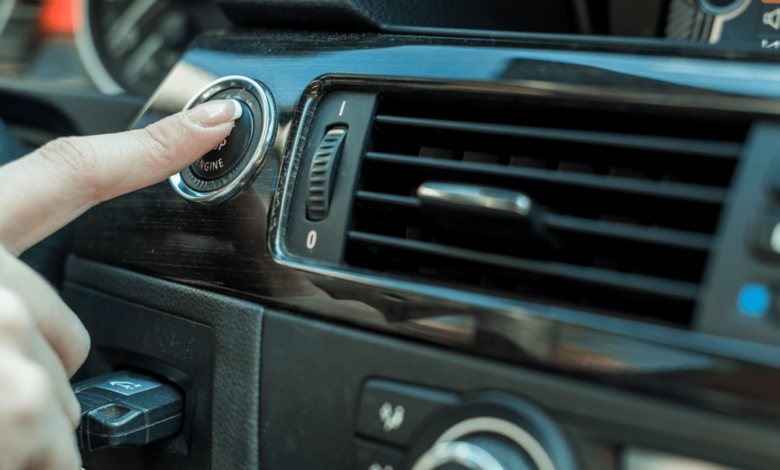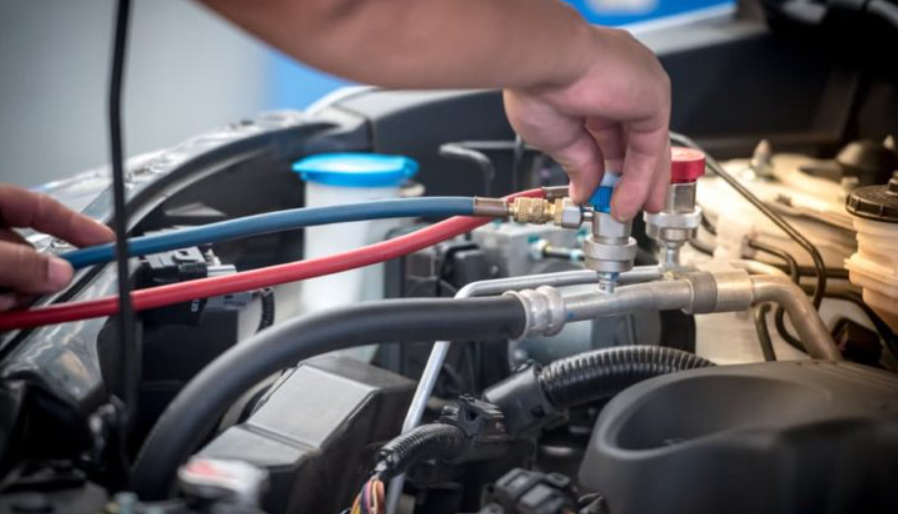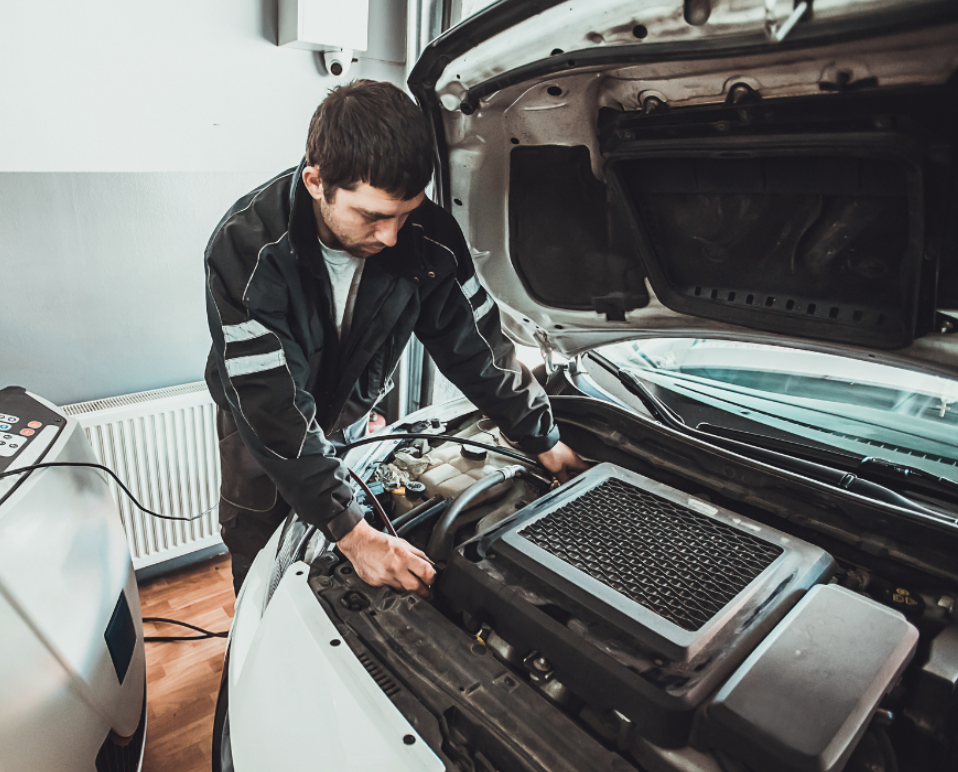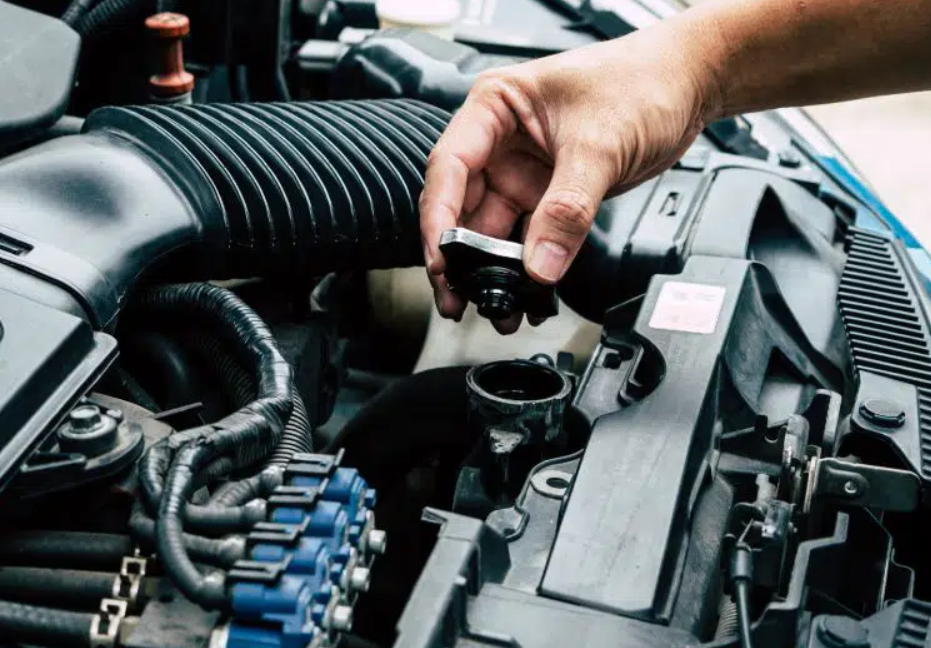
With summer temperatures nearing three digits, your AC will work hard to keep the cabin and anyone inside cool and comfortable. Air-conditioning is now a standard feature even in entry-level cars, but unlike other vehicle systems, this is also one that’s least understood. Besides reducing cabin temperatures for a cooler, more comfortable ride, your car aircon can save fuel and reduce external road noise by preventing wind buffeting at highway speeds while removing excess moisture on hot, muggy days. It also helps to demist windscreens and rear windows, so it enhances safety and visibility. It provides a more tolerable, fatigue-free drive, regardless of weather conditions.
Like all automotive parts and systems, car air conditioning requires regular maintenance to work as it should. But diagnosing issues, or servicing individual components is where most of us stop. Qualified professionals conduct detailed inspections to uncover possible leaks, check refrigerant levels, and clean components to ensure proper airflow and operation. Any failing or underperforming parts are also replaced.
Parts and How It Works

In simple terms, auto air conditioning uses a compressor to pressurize refrigerant from a liquid to a gaseous state, then circulate it through the system to absorb heat and humidity while delivering cool, dry air. The condenser cools the refrigerant, and the process repeats. To have a better understanding of how this works, let’s break down the individual parts in car air conditioners and their roles.
Refrigerant
Refrigerant (or freon) is the fluid that absorbs heat and moisture. The fluid’s ability to change state as it is compressed and cooled is what makes it effective in cooling and heating systems. The type of refrigerant is based on vehicle age. Older cars with early iterations of automotive air conditioning relied on R-12 freon, an effective but chlorofluorocarbon (CFC) variant phased out in the mid-1990s due to its detrimental effect on the ozone layer.
This was replaced by R134a, which is found in many cars in the US. While safer, the variant still poses an environmental risk. The newest approved refrigerant is the hydrofluoric-olefin R1234YF type, with European cars being the earliest adopters.
Compressor
This takes in low-pressure liquid refrigerant and compresses it into a high-pressure, heated gas. The compressor is a car air conditioning component located at the front of the engine and is powered by a serpentine belt connected to the crankshaft. Pressurized gas is then sent through a condenser.
Condenser

The condenser reduces refrigerant temperature while maintaining pressure, This cools the refrigerant as it changes back to a liquid state. The part resembles the radiator and uses a fan to transfer heat. It too is located at the front of the vehicle, just before the compressor.
Dryer/Receiver
This is located on the high-pressure side of the system, between the condenser and metering system. The part removes water from the refrigerant using a drying agent.
AC Inline Filter
An AC inline filter, also known as an AC line filter or power line filter, is a device used to filter out unwanted electrical noise and interference from an alternating current (AC) power line. These filters are essential in various electrical and electronic systems to ensure the smooth operation of equipment by reducing electromagnetic interference (EMI) and radio frequency interference (RFI). Contaminants and debris are filtered and removed from the system by an inline filter.
Expansion Valve/Orifice Tube
These are metering devices that control and restrict refrigerant flow. The restriction means the refrigerant changes state from a high-pressure liquid to a low-pressure mist, before moving onto the evaporator core. Orifice tubes perform a similar role but are conical in design. The parts are also found in different air conditioning types – expansion valves in receiver/dryer systems, and orifice tubes in accumulator and tube systems.
Evaporator Core

Low-pressure mist flows through the evaporator, a blower fan pushes cooled and dried air onto the cabin. In accumulator systems, a refrigerant holding tank connected to the evaporator removes moisture and the process repeats.
To sum up, low-pressure, low-temperature refrigerant enters the compressor, is compressed and heated, then cools, and is converted to liquid in the condenser while still under high pressure. The dryer (receiver) removes refrigerant water, and an expansion valve or orifice tube restricts flow and reduces pressure. The refrigerant then changes back to a gas in the evaporator absorbing heat. Air that blows across the evaporator core is cool and dry and enters the passenger compartment.
Common Issues Afflicting Auto Air Conditioning Systems
An auto air conditioning system can fail due to several reasons. Common symptoms include weak or restricted airflow from the vents, pronounced odors, noises and vibrations, and water pooling on the floor. Most failures occur from leaking refrigerant or defective parts.
If there is no cold air, the main issue is leaking refrigerant. This can happen in any part, including hoses and connecting pipes, as well as compressors, condensers, and evaporators. Since freon repeatedly changes state from a liquid to a gas, determining the exact location can prove difficult. HVAC technicians use fluorescent tracer dye to identify leaks and repair or replace defective parts.
No air from the vents can point to blown fuses and relays, damaged blower motors, blocked intakes, and ruptures or leaks in connectors and piping. Another typical issue is lukewarm air temperatures, instead of cold. This is usually down to a failed or clogged condenser, or circuitry controlling the compressor.
Unpleasant smells are a sign of bacteria buildup, specifically in cars that see the AC belting at full power. Bacteria, mold, and fungi accumulate around the evaporator core and can clog cabin filters. Simple fixes are replacing filters and adding an anti-bacterial solution to the evaporator. Similarly, water collecting on the floor is caused by bacteria buildup in drain hoses that remove excess moisture from the evaporator heater box. This causes clogging and water spewing on the floor, usually on the passenger side.
Lastly, noises and vibrations point to disconnected or faulty parts. Rattling and grinding noises, for instance, can be from loose plumbing, while pronounced vibrations often point to a failing compressor. This incidentally is the most expensive part to replace.
Maintaining Your Car’s AC

Air conditioners should be serviced yearly. Technicians check for clogged filters, disconnect hoses, leaking or low refrigerant, and defective parts. The system can also be cleansed to prevent bacterial buildup. Otherwise, this a sealed system that should function properly if well maintained.
Defects can also occur from faulty or worn belts supplying power to the compressor, and general engine cooling issues (specifically the radiator) that put more burden on the air conditioning. To prolong the effectiveness of your car’s AC and have it blowing cold air, turn the system on at lower settings before increasing fan speeds, roll up windows to prevent hot air, use the recirculation mode for faster cooling, and remember to turn the system off before turning the engine off.
We hope you found this article helpful. If you did, be sure to check out our blog for more great content like this.





